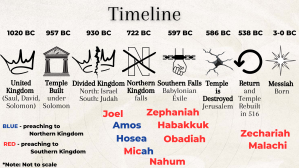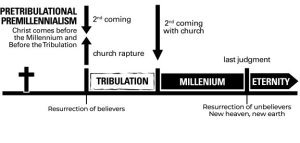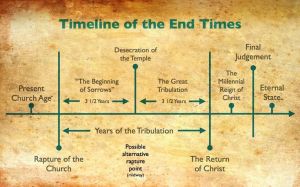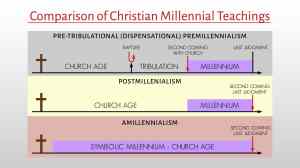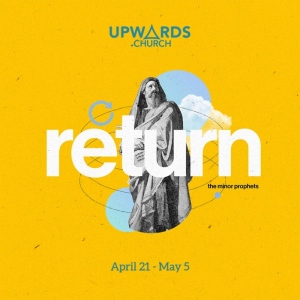 When we hear, “He’s a man of God,” we think of some famous evangelist, a “Reverend,” a missionary, or the campus minister—professionals, Christian workers, those who preach and teach the Word as a vocation.
When we hear, “He’s a man of God,” we think of some famous evangelist, a “Reverend,” a missionary, or the campus minister—professionals, Christian workers, those who preach and teach the Word as a vocation.
Surely Amos was a man of God, a person whose life was devoted to serving the Lord and whose lifestyle reflected this devotion—but he was a layperson. Herding sheep and tending sycamore-fig trees in the Judean countryside, Amos was not the son of a prophet; he was not the son of a priest. As a humble shepherd, he could have stayed in Tekoa, doing his job, providing for his family, and worshiping his God. But God gave Amos a vision of the future (1:1) and told him to take his message to Israel, the northern kingdom (7:15). Amos obeyed and thus proved he was a man of God.
 Amos (“burden bearer”) was a herdsman and a cultivator of sycamore trees (Amos 1:1; 7:14) when the Lord called him to be a prophet. He lived in the village of Tekoa, about eleven miles from Jerusalem, during the reigns of Uzziah in Judah (790-740 B.c.) and Jeroboam II in the Northern Kingdom of Israel (793-753). Amos was a “layman,” a humble farmer and shepherd who was not an official member of the Jewish religious or political establishment.
Amos (“burden bearer”) was a herdsman and a cultivator of sycamore trees (Amos 1:1; 7:14) when the Lord called him to be a prophet. He lived in the village of Tekoa, about eleven miles from Jerusalem, during the reigns of Uzziah in Judah (790-740 B.c.) and Jeroboam II in the Northern Kingdom of Israel (793-753). Amos was a “layman,” a humble farmer and shepherd who was not an official member of the Jewish religious or political establishment.
At this time, both Judah and Israel were enjoying prosperity and security. Luxury abounded (3:10-15; 5:1-6), and “religion” was popular. Israel flocked to the royal chapel at Bethel (4:4-5), and Judah celebrated the feasts enthusiastically (5:21-22), but the sins of both nations were eroding the religious and moral fiber of the people. Making money was more important than worshiping God (8:5); the rich exploited the poor, the judicial system was corrupt, and injustice flourished (5:11-15, 24; 8:4-6).
Amos presents God as the ruler of this world and declares that all nations are responsible to Him. The measure of a nation’s responsibility is the light which a nation has. The final test for any nation (or individual) is found in Amos 3:3, “Can two walk together, except they be agreed?” They knew of God’s covenants or agreements and chose to be unfaithful. In a day of prosperity, Amos pronounced punishment. The judgment of God awaited nations which were living in luxury and loving immorality.
Amos’s message has impacted God’s people throughout the centuries, and it needs to be heard today by individuals and nations. Though divided from their southern brothers and sisters in Judah, the northern Israelites were still God’s people. But they were living beneath a pious veneer of religion, worshiping idols and oppressing the poor. Amos, a fiery, fearless, and honest shepherd from the south, confronted them with their sin and warned them of the impending judgment.
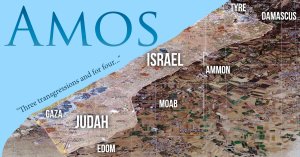 The book of Amos opens with this humble shepherd watching his sheep. God then gave him a vision of what was about to happen to the nation of Israel. God condemned all the nations who had sinned against him and harmed his people. Beginning with Damascus (Syria), he moved quickly through Gaza, Tyre, Edom, Ammon, and Moab. All were condemned, and we can almost hear the Israelites shouting, “Amen!” And then, even Judah, Amos’s homeland, was included in God’s scathing denunciation (2:4, 5). How Amos’s listeners must have enjoyed hearing those words! Suddenly, however, Amos turned to the people of Israel and pronounced God’s judgment on them. The next four chapters enumerate and describe their sins. It is no wonder that Amaziah the priest intervened and tried to stop the preaching (7:10-13). Fearlessly, Amos continued to relate the visions of future judgment that God gave to him (chapters 8-9). After all the chapters on judgment, the book concludes with a message of hope. Eventually God will restore his people and make them great again (9:8-15).
The book of Amos opens with this humble shepherd watching his sheep. God then gave him a vision of what was about to happen to the nation of Israel. God condemned all the nations who had sinned against him and harmed his people. Beginning with Damascus (Syria), he moved quickly through Gaza, Tyre, Edom, Ammon, and Moab. All were condemned, and we can almost hear the Israelites shouting, “Amen!” And then, even Judah, Amos’s homeland, was included in God’s scathing denunciation (2:4, 5). How Amos’s listeners must have enjoyed hearing those words! Suddenly, however, Amos turned to the people of Israel and pronounced God’s judgment on them. The next four chapters enumerate and describe their sins. It is no wonder that Amaziah the priest intervened and tried to stop the preaching (7:10-13). Fearlessly, Amos continued to relate the visions of future judgment that God gave to him (chapters 8-9). After all the chapters on judgment, the book concludes with a message of hope. Eventually God will restore his people and make them great again (9:8-15).
As you read Amos’s book, put yourself in the place of those Israelites and listen to God’s message. Have you grown complacent? Have other concerns taken God’s place in your life? Do you ignore those in need or oppress the poor? Picture yourself as Amos, faithfully doing what God calls you to do. You, too, can be God’s person. Listen for his clear call and do what he says, wherever it leads.
Vital Statistics
Purpose: To pronounce God’s judgment upon Israel, the northern kingdom, for its complacency, idolatry, and oppression of the poor
Original Audience: The people of Israel (the northern kingdom)
Date Written: During the reigns of Jeroboam II of Israel and Uzziah of Judah (approximately 760-750 B.C.)
Setting: The wealthy people of Israel were enjoying peace and prosperity. They were quite complacent and were oppressing the poor, even selling them into slavery. Soon, however, Israel would be conquered by Assyria, and the rich would themselves become slaves.
Key Verse: “Instead, I want to see a mighty flood of justice, an endless river of righteous living” (5:24).
Special Features: Amos uses striking metaphors from his shepherding and farming experience—a loaded wagon (2:13), a roaring lion (3:8), a mutilated sheep (3:12), fat cows (4:1), and a basket of ripe fruit (8:1, 2).
Outline
1. Announcement of judgment (1:1-2:16)
2. Reasons for judgment (3:1-6:14)
3. Visions of judgment (7:1-9:15)
Amos speaks with brutal frankness in denouncing sin. He collided with the false religious leaders of his day and was not intimidated by priest or king. He continued to speak his message boldly. God requires truth and goodness, justice and righteousness, from all people and nations today as well. Many of the conditions in Israel during Amos’s time are evident in today’s society. We need Amos’s courage to ignore danger and stand against sin.
| MEGATHEMES | ||
| THEME | EXPLANATION | IMPORTANCE |
| Everyone Answers to God | Amos pronounced judgment from God on all the surrounding nations. Then he included Judah and Israel. God is in supreme control of all the nations. Everyone is accountable to him. | All people will have to account for their sin. When those who reject God seem to get ahead, don’t envy their prosperity or feel sorry for yourself. Remember that we all must answer to God for how we live. |
| Complacency | Everyone was optimistic, business was booming, and people were happy (except for the poor and oppressed). With all the comfort and luxury came self-sufficiency and a false sense of security. But prosperity brought corruption and destruction. | A complacent present leads to a disastrous future. Don’t congratulate yourself for the blessings and benefits you now enjoy. They are from God. If you are more satisfied with yourself than with God, remember that everything is meaningless without him. A self-sufficient attitude may be your downfall. |
| Oppressing the Poor | The wealthy and powerful people of Samaria, the capital of Israel, had become prosperous, greedy, and unjust. Illegal and immoral slavery came as the result of over-taxation and land-grabbing. There was also cruelty and indifference toward the poor. God is weary of greed and will not tolerate injustice. | God made all people; therefore, to ignore the poor is to ignore those whom God loves and whom Christ came to save. We must go beyond feeling bad for the poor and oppressed. We must act compassionately to stop injustice and to help care for those in need. |
| Superficial Religion | Although many people had abandoned real faith in God, they still pretended to be religious. They were carrying on superficial religious exercises instead of having spiritual integrity and practicing heartfelt obedience toward God. | Merely participating in ceremony or ritual falls short of true religion. God wants simple trust in him, not showy external actions. Don’t settle for impressing others with external rituals when God wants heartfelt obedience and commitment. |
Message Audio/Video and Outline: https://upwards.church/watch-now/leander-campus-videos
Watch Messages: YouTube-Upwards Church
Sources:
Life Application Study Bible, (Wheaton, IL: Tyndale, 1988), WORDsearch CROSS e-book, 1435-1436.
J. Vernon McGee, Thru The Bible with J. Vernon McGee, (Nashville, TN: Thomas Nelson, 1983), WORDsearch CROSS e-book, Under: “AMOS”.

